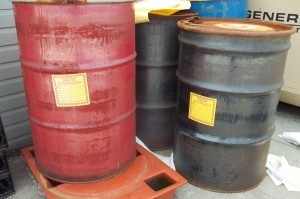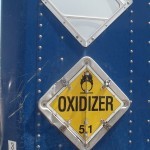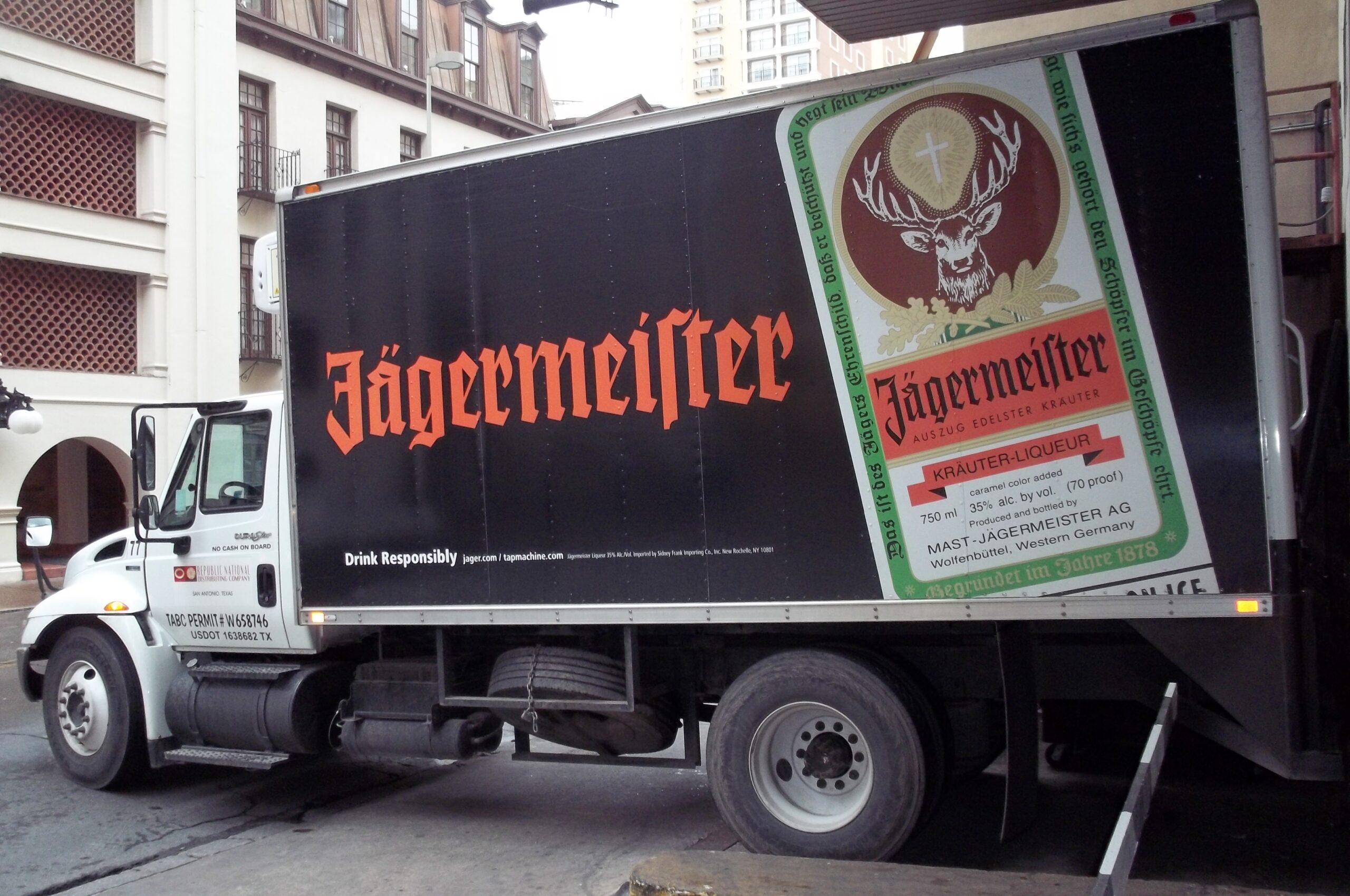A person that generates any waste is required to determine if that waste is a hazardous waste pursuant to the method identified in 40 CFR 262.11. The US EPA has identified two different categories of hazardous waste: listed and characteristic. To be listed a hazardous waste must meet the defined use or status documented at 40 CFR 261, Subpart D. As there are no approved test methods for the determination of a listed waste; generators must rely on their knowledge of the wastes origins. Listed wastes include the following:
- F-listed waste from non-specific manufacturing process sources –waste codes F001 to F039.
- K-listed waste from specific manufacturing process sources – waste codes K001 to K181.
- P & U-listed waste from discarded commercial chemical products, off-specification species, container residues, and spill clean-up materials – waste codes P001 to P205 and U001 to U411.
The other category of hazardous waste: characteristic, must exhibit specific characteristic as defined at 40 CFR 261, Subpart C. To determine the presence of hazardous waste characteristics, a hazardous waste generator may rely solely on their knowledge of the waste and the process of generation, but the better method is lab analysis by a US EPA-approved test method of a representative sample. Characteristic hazardous waste includes the following:
- Ignitability – waste code D001
- Corrosivity – waste code D002
- Reactivity – waste code D003
- Toxicity – waste codes D004 to D043
 Ignitable hazardous waste as defined at 40 CFR 261.21 may have one of four properties:
Ignitable hazardous waste as defined at 40 CFR 261.21 may have one of four properties:
- A liquid with a flash point of <140˚F.
- A solid that can cause a fire and sustain combustion.
- An ignitable compressed gas.
- An oxidizer.
The above four bullet points only skim the surface of the properties that would cause a waste to be identified as an ignitable hazardous waste. The purpose of this article is to dig deeper into these properties to gain a better understanding of ignitable hazardous waste and perhaps cause you to rethink how you are currently applying the D001 waste code to your hazardous waste. We’ll look at each of the properties one at a time; I suggest you print a copy of the regulations – it’s only two pages – and follow along.
A liquid with a flash point of <140˚F:
How 40 CFR 261.21(a)(1) reads: “It is a liquid, other than an aqueous solution containing less than 24 percent alcohol by volume and has a flash point less than 60˚C (140˚F)…” It goes on to reference the two approved test methods for determining flash point of the liquid which must be used.

The first point of interest is the exception for aqueous solutions containing <24% alcohol. This is interesting because though it was placed in the regulation solely to remove alcoholic beverages and certain latex paints from being categorized as an ignitable liquid, it has the affect of exempting from regulation as a D001 Ignitable all aqueous wastes which are ignitable solely because they contain alcohols (i.e. any chemical containing the hydroxyl [-OH] functional group) (RO 11060).
The second, and potentially much more important, point of interest is the requirement that the waste be a liquid in order to test for flash point. So…no liquid, no test for flash point, no liquid flash <140˚F, no ignitable hazardous waste (RO 14669, RO 14405). This is true even if the solid, with no liquid present, flashes at <140˚F. To meet this requirement, the waste must contain a free liquid that fails the paint filter test. The determining factor – the flash point – is run on that liquid only. This property should be determined entirely by careful analysis of representative samples. Be sure the lab conducting the analysis is aware of your needs.
A solid that can cause a fire and sustain combustion:
A solid without free liquids may still be an ignitable hazardous waste if it exhibits the properties of a solid that can cause a fire and sustain combustion. 40 CFR 261.21(a)(2) reads, “It is not a liquid and is capable, under standard temperature and pressure, of causing fire through friction, absorption of moisture or spontaneous chemical changes and, when ignited, burns so vigorously and persistently that it creates a hazard.” Refer again to RO 14669 and you will read, “The Agency has not developed specific regulatory or guidance tests to implement this portion of the regulation.” It is referring to its lack of a single approved test method to identify a solid ignitable hazardous waste in full. RO 14405 references SW-846 Method 1030, Ignitability of Solids as a means to assess a solids ability to burn vigorously, but not its mode of ignition; and so may not be used to make a complete determination. Note that the requirement for this property is that it both cause a fire by itself and sustain combustion to the point that it causes a hazard. You will have to use a combination of tests and generator knowledge to make a determination if this property is present in your waste.
An ignitable compressed gas:
I won’t reprint all of the regulation here, as it is long, technical, and my transcription won’t aid understanding. Instead, I suggest you read it directly from 40 CFR 261.21(a)(3)(i) if you generate any waste that might be an ignitable compressed gas. As you read, consider the two distinct descriptions in this subparagraph of…
- A compressed gas in sub-subparagraph (i); and,
- An ignitable compressed gas in sub-subparagraph (ii).
Note that the determination of a compressed gas’ ignitability relies on test methods approved by the Bureau of Explosives (how do I get a job with them?) and the Pipeline and Hazardous Technology of the Department of Transportation.
An oxidizer:

The hazard of an oxidizer is that it is capable of releasing oxygen during a chemical reaction and multiplying the danger of a fire. 40 CFR 261.21(a)(4) reads, “An oxidizer for the purpose of this subchapter is a substance such as a chlorate, permanganate, inorganic peroxide, or a nitrate, that yields oxygen readily to stimulate the combustion of organic matter.” Sub-subparagraph (i) includes organic peroxides as an oxidizer unless other conditions in the subparagraph exclude it. Like the ignitable compressed gas, the regulatory description is long and technical, so I won’t include it here. And like the flammable solid, this property does not have a test method; instead the chemical structure of the material determines whether or not the waste is hazardous for ignitability as an oxidizer. Be sure you have Material Safety Data Sheets or other sources of information with the chemical composition of your waste available as you read the regulations and determine if this property of ignitability applies to your waste.
Summary:
The ignitability hazardous waste characteristic identifies wastes that pose a significant fire risk due either to their low flash point, ability to self-combust and burn, or are able to combust or support combustion due to their physical properties. If any one of the above properties is present, you must manage the waste as a D001 ignitable hazardous waste. Keep in mind that other characteristic or listed waste codes may apply to the waste as well. Conversely, take a second look at some of the wastes you’ve identified as ignitable, a close review of the above information and some careful analysis may reveal them to not meet the definition of ignitability.
Be sure to check with your state environmental regulatory agency or regional US EPA to determine their interpretation of the above, especially the determination of ignitability for solids that are contaminated with flammable liquids, such as wipers. The US EPA has been proposing regulation for solvent-contaminated wipers for years (perhaps 2012 is the year for a final rule, stay tuned) but in the meantime many states have gone ahead with US EPA’s blessing to create state-specific interpretations.
Daniels Training Services 815.821.1550 |
The above is only one small part of the hazardous waste determination process, which is something you must document for every waste that you generate. The determination itself is only the first step in identifying your hazardous waste generator status and then the regulations you must follow based on your status. It may seem overwhelming, but there is a way to make sense of US EPA’s hazardous waste regulations: attend one of my open enrollment training events. Held nationwide and year round there is sure to be one in your area soon. Or contact me to schedule on-site training for all of your employees for one flat fee. If you liked this article, be sure to sign up for my monthly newsletter to receive more like it via email. I look forward to hearing from you.

